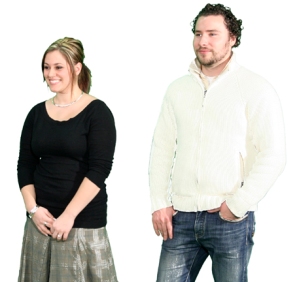By this time we all know the tropes that define who millennials (M) are, how they act and their fundamental personality characteristics. You’d think with all of this proven—and nowhere is it more evident than in large corporations—that learning programs would have been adjusted to align instruction with M proclivities for workplace education.
Having just spent some time at an F100 company I can affirm with great certainty, most instruction is still a series of bland courses and in some cases long and winding webinars. It bears remembering we are in business of transmitting only three things: knowledge, skills, and behaviors. I saw few instances where any modifications to training accommodated the ways in which young employees would spark to, tolerate, let alone benefit from anything being taught unless it was compulsory. And of course, pushing training down to a M will just shut down their attention. So, with a grudging acceptance of what had to be learned, skills absorbed only if they had immediate utility, and behaviors, well…let’s just say the millennials I was working with and around were not among the receptive.
You can refer to two articles I had written back in 2014 about multi-generational learning and see even then, there was a clear rubric and tactics for reaching millennials. Unfortunately, making a case to adjust corporate learning programs and actually rewriting and modifying delivery are at polar ends and still out in the frozen tundra. [Overcoming Generation Differences When Building Learning: Part 2
NOW EVERYONE WINS: OVERCOMING GENERATION DIFFERENCES WHEN BUILDING LEARNING]
So, what to do. CLO’s it seems, unless really enlightened, have not passed down by policy the need to make learning aligned to what will soon be their largest contingent (25%) of employees. The company I just left dictated to the CLO that webinars would be the mode of choice for sales enablement and product knowledge – and they were level set to be 60-90 minutes. For sales staff! A double whammy there, right? A young millennial in sales is being taught essentially in the exact opposite learning style that would yield useful results.
A LIST OF WHAT MIGHT ATTRACT AND DELIVER USEFUL LEARNING TO MILLENIALS
- Learning has to be in small bits and any of these learning elements I’ll mention need not be delivered in any particular order– but they will be repeated in what I call a multi-touch ecology. Hyperconnectivity is baked in to millennials as is multitasking. Millennials are 2.5 times more likely to embrace and use new technology. This approach has elements of microlearning but it benefits the learner because it is repeated in other modalities & technologies.
- For instance, in a short form course, organizations might deliver one or two elements of knowledge, skills or behaviors, make it interactive and/or with gamification and require responses. Consider collaboration within the methodology. Those responses are recorded and then the course is revisited for learners to rectify any incorrect responses. Nothing radical here except for the amount of time on learning – short attention spans will be honored.
- Learning with multi-modal exposure. Consider the power of a short, sharp podcast (or many) accessed and aligned to courseware – further amplifying recently introduced content.
- Questions posed in the podcast might be pushed out to mobile devices where, once again responses would be entered and tabulated.
- We’ve just laid out three modes: a short course, a podcast, and mobile learning. Let’s not forget dedicated pages on Facebook for content, polling and collaboration, and Twitter or SnapChat for instant feedback. Short videos right off Smartphones – 10 seconds worth – carry incredible power to influence, to convince, to give testimony. New tech must serve the learning purpose and be considered ‘cool.’ Finally, a mentor or coach would have the opportunity to not only work with the individual millennial but also learn what modalities worked best – and what components of this ecology yielded both cognitive results and emotional commitment. Multiple touches of the same knowledge, skills and behaviors are vital to retention and even more so for sales staff.
- These elements have all the benefits of autonomous learning, can be collaborative if so designed and tend to be informal. All three criteria are in the personality set of younger employees.
Multiple touches—that is delivering the same content over different methodologies and modalities are essential for millennials. Learning is short – but repeated with multiple touches
- Learning can be collaborative
- Learning is couched inside compelling technologies
- Learning is interactive
- Learning is delivered on demand
- Learning is multi-modal
- Learning has digital with human feedback
- Learning is autonomous
- Learning content while repetitious is tolerable with multiple modalities
- Learning with multiple touches will be the norm
- Learning will be put to use because it happens over time – not a one sitting – therefore it will always be top of mind
As I looked around the work floor, I noted my millennial colleagues who, to a person were hard working, committed and extraordinarily helpful to an older geezer like me. Nevertheless, they also shared the frustrations they had with long, drawn out courses, for instance during onboarding, that might have been produced in 1999. That’s no way to motivate people who come predisposed to do good work. When learning is delivered to their particular learning characteristics, they become empowered, more loyal and see the corporate culture as honoring their personal temperament. That’s a lot of big wins. It’s up to the corporate masters to commit to modify learning, reach, and reach out to the millions of new workers whom they will be leading and managing now and more so, in the very near future.




All good points, yet seemingly learning, course development, strategy and tact is more about prudent adaptation to all of our current environments more so than an overt focus on stereotypical millennial generation behaviors.
I am beginning to see so many stereotypes applied to generations, such that perhapssome caution in the labeling or targeting a generation might be applied.
Accommodation for variation in learning modes and individual attributes, might render better results and technology has already been helpful in helping people learn in different ways, in different settings and a varied pace and depth. To avoid a problem with the next generation, I think the tact needs to be adaptive to all reasonable audiences.